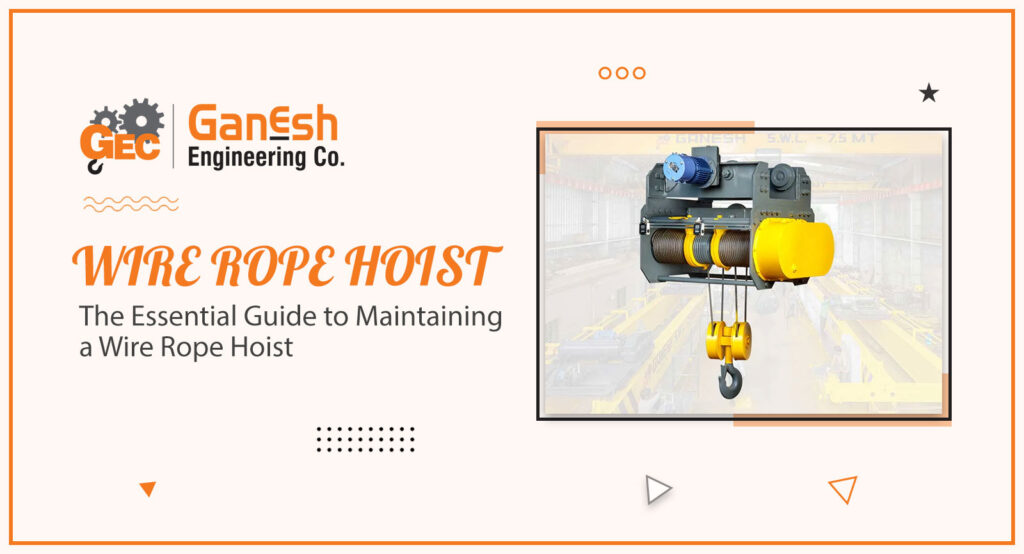
Hoists are essential for improving the ergonomics of an operation by allowing a single person to lift and lower freely suspended, bulky items for positioning, transport, and installation. Hoists like wire rope hoists, not only relieve the fatigue of repeatedly lifting big goods by hand, but they also improve handling efficiency and productivity. Nevertheless, once you purchase a wire rope hoist, it’s your responsibility to keep the hoist in good working order, so that it can endure for a long time. For your convenience, in this, we’ll explore various steps for maintaining a wire rope lift or hoist.
Wire Rope Hoist
A wire ropes hoist is a consumable device that will wear and tear after repeated use. As a result, the more wire rope hoists are used, the more they change and become less efficient. However, it can be used for a long period before needing to be replaced.
The Critical Steps for Maintaining an Electric Wire Rope Hoist
Consider the following steps for maintaining your wire rope hoist:
- When the jaw of an electric hoist becomes worn and its bearing capacity falls below 80% of the rated load, it must be replaced.
- When the diameter of the wire rope is lowered by 10%, the electric hoist’s wire rope must be replaced.
- After a period of use, the steel wire rope must be oiled. On the one hand, it can keep the steel wire rope from rusting. However, during the operation of the steel wire rope, there will be sliding friction between the steel wire and the steel wire in the same strand between each strand of the steel wire rope, which is especially thrilling when the steel wire rope is subjected to bending stress. This friction can be minimized once the lubricant oil is applied.
- The electric hoist of steel wire rope must be serviced at least four times a year, including cleaning the parts with diesel oil and lubricating with calcium base grease.
Safety Features to Look for in an Electric Wire Rope Hoist
When selecting an electric wire rope lift or hoist, safety should always come first. When selecting a hoist, there are various safety features to consider. Significant features include:
Limit switch: A limit switch is a crucial safety element. Limit switches are used to restrict the hoist from raising or lowering loads beyond a specified height or point. This contributes to the prevention of accidents and ensures that the hoist is used safely.
Overload protection: It is another critical safety element. Overload prevention prevents the hoist from lifting excessively heavy loads. If the hoist senses that the load is too heavy, it will instantly cease raising to protect the hoist and ensure that the load is lifted safely.
Failsafe brake: It is critical to select a hoist with a failsafe brake. A failsafe brake is meant to engage automatically in the event of a power outage or other emergency, ensuring that the load is retained safely and averting accidents.
Conclusion
Ganesh Engineering as the leading manufacturer of a comprehensive range of crane and hoist equipment, consistently ensures that their products are of high quality. They offer a large assortment of wire rope to choose from. Visit the website for more information.

